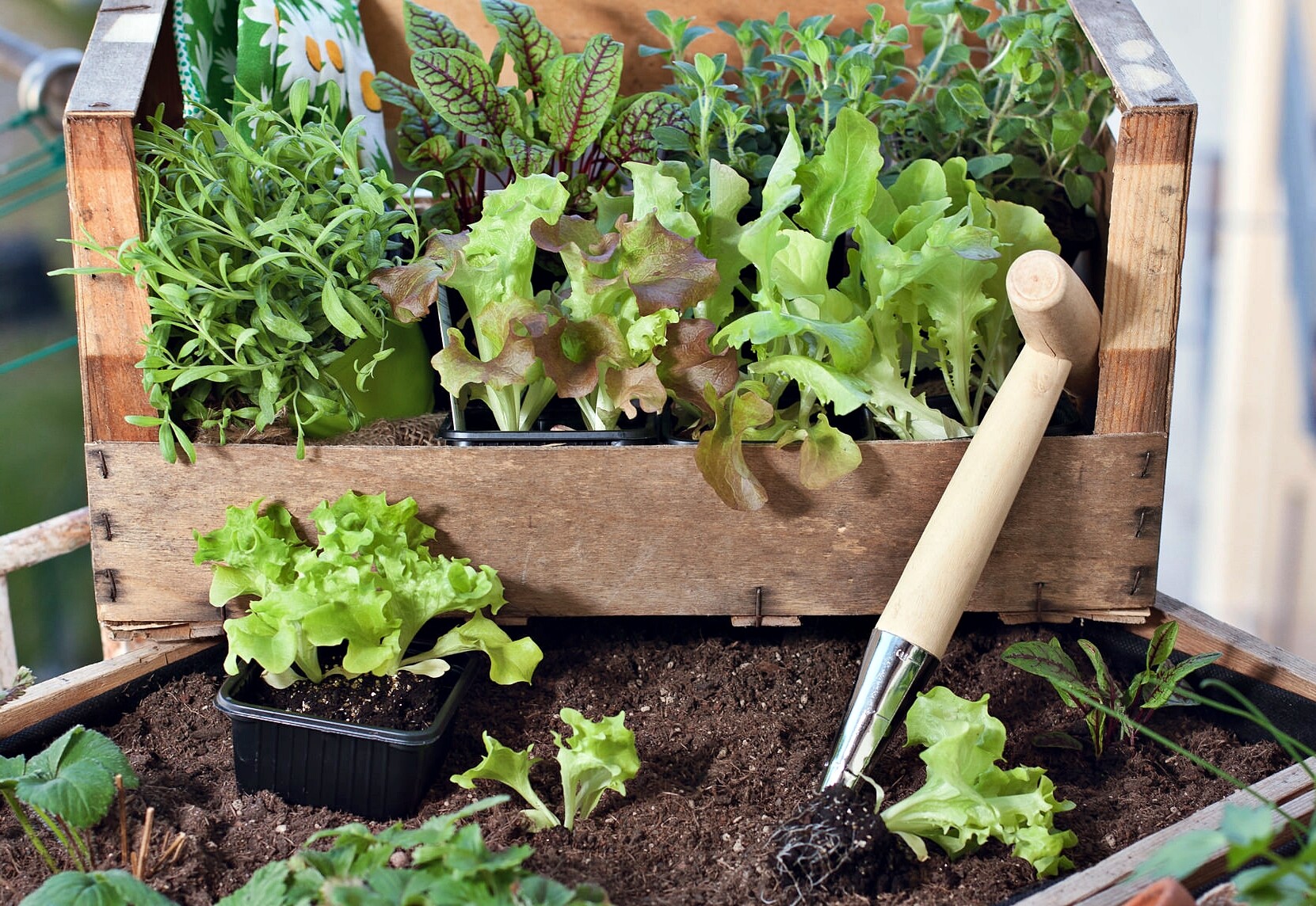Creating a Raised Garden Bed on The Balcony: The Best Tips & Tricks
We garden even without a garden! Here you can find out what you should bear in mind when you have a raised bed on the balcony.
Hurrah for the balcony bed!
If you don’t have a garden, but do have a balcony, you can just as well go under the hobby gardeners with a raised bed. Growing vegetables is also excellent there! If that is not reason enough, here are even more advantages:
- You can use your compost wisely.
- Your plants get more light and heat.
- Snails hardly have a chance to get at your vegetables.
- You save yourself the hassle of bending over and kneeling on the ground.
- Less weeds, more yields – yes!
A raised bed is available in smaller versions, so that they have loose space on a balcony. You can choose between raised beds made of wood, metal, plastic or stone – and if you are a skilled craftsman, you can even build one yourself. The raised bed is ideally 80 or 90 cm high and has feet so that it is not too close to the ground and frost has no chance. A raised bed on wheels could also be useful under certain circumstances, so it can be moved quickly.
Even if you have a large balcony, you should keep an eye on the load and avoid a too large bed! What else you should pay attention to when filling and planting is explained here.
Fill the raised bed on the balcony correctly
For optimal growing conditions, the raised bed is layered in four layers (from bottom to top):
- Drainage: pruning, e.g. branches and twigs
- Filling layer of leaves and garden/kitchen waste
- Compost layer with half ripe compost, straw or animal bedding
- Planting layer: Plant substrate
A loft bed on the balcony will not be as deep as one in a large garden. The lower two layers should be slightly thicker than the two upper ones. Nevertheless, the substrate should not be spread too thinly, so that the plants get enough nutrients.
Ideal is to fill it in the autumn, the lower layers rot over the winter, which causes the bed to sink. In this way, the plants would also sink in, but not everyone can tolerate this! But even spring can still be used for filling.
Over the years the loft bed will continue to sink in, but you can compensate for this by filling it with compost. Every four to five years the loft bed is renewed.
Planting the bed
If you now think that you are simply planting a huge amount of radishes because you like them so much, you are in for a disappointment: even in a raised bed, crop rotation should be maintained, i.e. plant heavy ears in the first year, medium ears in the second and weak ears in the third (that’s when the radishes finally come into play!).
A selection of suitable strong eaters
- Cauliflower
- Broccoli
- Tomatoes
- Peppers
- Potatoes
- Beetroot
Heavily consuming plants need a lot of water!
Appropriate resource depletion
- Carrots
- Fennel
- Garlic
- Kohlrabi
- Swiss chard
- Parsnip
- Chives
Possible weaknesses for your raised bed
- Peas
- Herbs (rosemary, dill, coriander)
- Radish
- Purslane
- Arugula
Tip: You should know about planting radishes, herbs and garlic.
Flowers in a raised bed
Growing vegetables is just one way, planting flowers is just as natural.
- Examples of severely damaged plants are sunflowers, tulips or chrysanthemums
- Siamese eaters, e.g. dahlias or snapdragons
- Weak eaters such as azaleas or begonias
A colourful feast for the eyes on your balcony is thus for sure 🥰.

